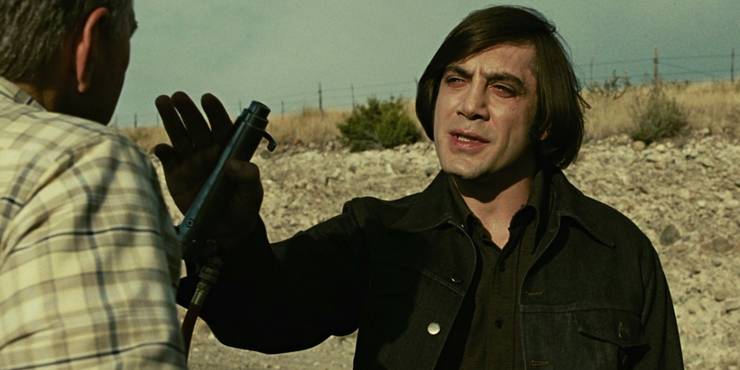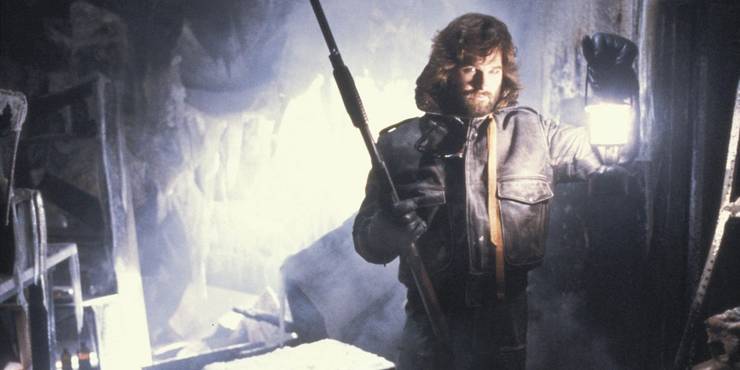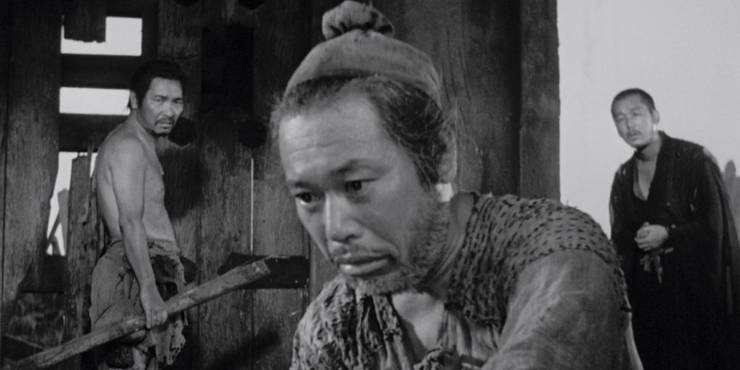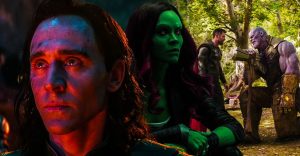No Country For Old Men & 9 Other Movies With No Closure

Movies with no closure at the end can often leave audiences feeling frustrated because they dedicated two hours of their life to a story without a real conclusion. But when it’s done right, an ambiguous ending can prompt all kinds of discussion on the drive home.
The Coen brothers are famous for their ambiguous endings, as seen in Miller’s Crossing, A Serious Man, Barton Fink, and most of the segments in The Ballad of Buster Scruggs. Their most famous inconclusive ending is arguably their Best Picture-winning neo-western masterpiece No Country for Old Men, which ends with Sheriff Bell feeling just as lost and confused as the audience.
10 No Country For Old Men (2007)

The Coens’ mesmerizing adaptation of Cormac McCarthy’s No Country for Old Men is set up as a tense cat-and-mouse thriller. Josh Brolin plays a hunter named Llewelyn Moss who stumbles across a briefcase full of drug money and Javier Bardem plays a sadistic hitman named Anton Chigurh who’s sent to get it back.
In the end, Moss is killed off-screen — and not by the hitman who’s been pursuing him through the whole movie, just by some random criminals.
9 Inception (2010)

Fans have been discussing the final moments of Christopher Nolan’s Inception for over a decade. Most of this discussion revolves around whether or not Cobb is in the dream world, but that doesn’t matter.
The important thing is that Cobb walks away while the top is still spinning. He doesn’t care if it’s a dream or not. After everything he’s been through inside Fischer’s mind, he just wants to spend time with his kids, even if they’re just subconscious reconstructions of his kids.
8 Drive (2011)

Throughout Nicolas Winding Refn’s neo-noir gem Drive, Ryan Gosling’s unnamed getaway driver character unwittingly gets involved in a doomed stickup and becomes the target of a ruthless crime syndicate.
While Ron Perlman’s mob boss character meets a grisly end on the beach, the movie’s final moments leave the story’s conclusion ambiguous.
7 2001: A Space Odyssey (1968)

Stanley Kubrick’s original script for his sci-fi epic 2001: A Space Odyssey ended with the revelation that the satellites surrounding Earth were nuclear weapons. The Star Child would detonate the weapons, destroying all life on Earth.
But the director changed his mind because he didn’t want to make two movies in a row that ended with Earth being decimated by nukes (following his 1964 political satire masterpiece Dr. Strangelove). Instead, he left it ambiguous, and it’s since become one of the most iconic ambiguous endings in film history. Every viewer can interpret the ending in their own way.
6 The French Connection (1971)

Gene Hackman stars in William Friedkin’s classic crime thriller The French Connection as tough-as-nails cop Popeye Doyle, who relentlessly pursues French heroin smuggler Alain Charnier through the streets of New York City.
In the movie’s ambiguous final moments, Doyle chases Charnier off-screen and a single gunshot is heard. According to a title card, Charnier was never found.
5 The Thing (1982)

The titular alien threat that invades an Arctic research outpost in John Carpenter’s The Thing can shapeshift into any form, including a spot-on imitation of any of the scientists working at the facility.
At the end of the movie, it’s unclear if they’ve managed to vanquish the beast, or if they’re all really themselves and one of them isn’t the alien in disguise.
4 Inside Llewyn Davis (2013)

Another Coen brothers’ effort, Inside Llewyn Davis doesn’t have much of a plot. It’s more of an episodic string of vignettes taken from a folk singer’s life as he drifts across ‘60s America, bouncing from gig to gig. Oscar Isaac’s incredible performance anchors the whole movie.
In the final scene, Bob Dylan takes the stage at The Gaslight, destined for the kind of stardom Llewyn missed out on, and Llewyn keeps coasting through life.
3 Zodiac (2007)

In this case, the movie’s failure to provide closure can be blamed on real life’s failure to provide closure. David Fincher couldn’t end Zodiac with the unmasking of the killer because the Zodiac was never caught or identified.
It’s appropriate that Fincher would take on an ambiguous true crime story because his career has proven him to be a master of ambiguous endings: Se7en, Fight Club, Gone Girl.
2 The Shining (1980)

Few movies have been interpreted in more wildly different ways than Stanley Kubrick’s The Shining. Its on-screen horrors have been read as metaphors for alcoholism, child abuse, CIA mind control, and the Holocaust, as well as a confession that the Moon landing was faked.
In the end, Wendy and Danny manage to escape from their murderous ax-wielding patriarch, but the ambiguous final shot makes it unclear what actually happened at the Overlook.
1 Rashomon (1950)

Akira Kurosawa’s masterpiece Rashomon revolves around the murder of a samurai and the sexual assault of his wife. The bandit responsible, the samurai’s wife, the samurai himself speaking from beyond the grave through a medium, and a woodcutter who witnessed the event all give conflicting accounts of the same story.
As the four each try to present the best version of themselves through a false version of the story, Kurosawa suggests that the truth is subjective. There is no “right” answer in Rashomon — it’s open to interpretation.
About The Author


















